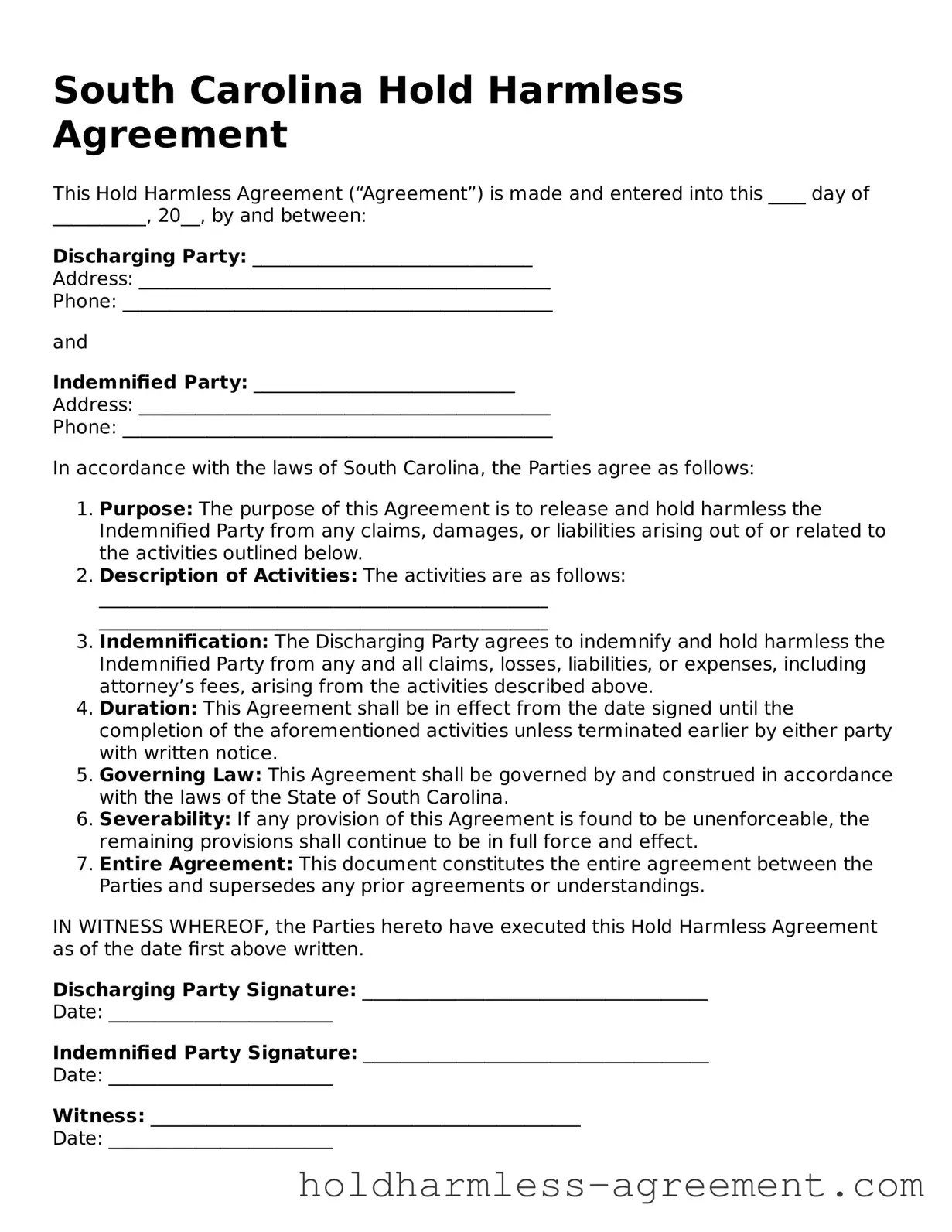What is a Hold Harmless Agreement in South Carolina?
A Hold Harmless Agreement is a legal document that protects one party from liability or claims made by another party. In South Carolina, these agreements are commonly used in various situations, such as rental agreements, construction contracts, and event planning. By signing this agreement, one party agrees not to hold the other responsible for certain risks or damages that may occur.
Who typically uses a Hold Harmless Agreement?
Hold Harmless Agreements are used by a variety of individuals and organizations, including:
-
Property owners
-
Contractors
-
Event organizers
-
Businesses offering services
-
Individuals renting equipment or property
Each party involved in an agreement should carefully consider the risks and protections being outlined.
What are the key components of a Hold Harmless Agreement?
Typically, a Hold Harmless Agreement includes the following components:
-
The names of the parties involved
-
A clear description of the activities or services covered
-
Specific language outlining the liabilities being waived
-
The duration of the agreement
-
Signatures of all parties involved
These elements ensure clarity and enforceability of the agreement.
Is a Hold Harmless Agreement legally binding in South Carolina?
Yes, a properly drafted Hold Harmless Agreement is generally considered legally binding in South Carolina. However, it must meet certain requirements, such as being clear and specific about the liabilities being waived. Courts may not enforce agreements that are vague or overly broad.
Can a Hold Harmless Agreement be challenged in court?
Yes, a Hold Harmless Agreement can be challenged in court. Common reasons for challenges include:
-
Lack of clarity in the agreement
-
Coercion or undue influence during signing
-
Unconscionable terms that are excessively one-sided
-
Public policy violations
It's essential to ensure that the agreement is fair and reasonable to minimize the risk of a legal challenge.
Do I need a lawyer to create a Hold Harmless Agreement?
While it's possible to create a Hold Harmless Agreement without legal assistance, consulting a lawyer is recommended. A legal professional can help ensure that the document meets all necessary legal standards and adequately protects your interests.
How does a Hold Harmless Agreement differ from insurance?
A Hold Harmless Agreement is a contractual arrangement between parties, while insurance is a financial product that provides coverage for specific risks. The agreement shifts liability from one party to another, whereas insurance typically covers losses or damages that may occur. Both can work together for comprehensive protection.
What should I do if I am asked to sign a Hold Harmless Agreement?
If you are asked to sign a Hold Harmless Agreement, take the following steps:
-
Read the agreement carefully.
-
Ask questions if any terms are unclear.
-
Consider the risks involved.
-
Consult a lawyer if you have concerns.
Understanding your rights and responsibilities is crucial before signing any legal document.
